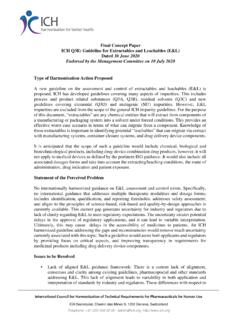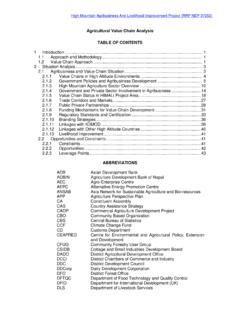Transcription of PRECLINICAL SAFETY EVALUATION OF BIOTECHNOLOGY …
1 INTERNATIONAL CONFERENCE ON HARMONISATION OF TECHNICAL REQUIREMENTS FOR REGISTRATION OF PHARMACEUTICALS FOR HUMAN USE ICH HARMONISED TRIPARTITE GUIDELINE PRECLINICAL SAFETY EVALUATION OF BIOTECHNOLOGY -DERIVED PHARMACEUTICALS S6(R1) Parent Guideline dated 16 July 1997 Current Step 4 version Addendum dated 12 June 2011 incorporated at the end of June 2011 This Guideline has been developed by the appropriate ICH Expert Working Group and has been subject to consultation by the regulatory parties, in accordance with the ICH Process. At Step 4 of the Process the final draft is recommended for adoption to the regulatory bodies of the European Union, Japan and USA. S6(R1) Document History First Codification History Date New Codification November 2005 Parent Guideline: PRECLINICAL SAFETY EVALUATION of BIOTECHNOLOGY -Derived Pharmaceuticals S6 Approval by the Steering Committee under Step 2 and release for public consultation.
2 6 November 1996 S6 S6 Approval by the Steering Committee under Step 4 and recommendation for adoption to the three ICH regulatory bodies. 16 July 1997 S6 Addendum to the Parent Guideline S6(R1) Approval by the Steering Committee under Step 2 and release for public consultation. 29 October 2009 S6(R1) Current Step 4 version S6(R1) Approval by the Steering Committee under Step 4 and recommendation for adoption to the three ICH regulatory bodies. The Addendum has been incorporated into the parent Guideline which is now renamed S6(R1). 12 June 2011 S6(R1) PRECLINICAL SAFETY EVALUATION OF BIOTECHNOLOGY -DERIVED PHARMACEUTICALS ICH Harmonised Tripartite Guideline TABLE OF CONTENTS PART I: .. 1 1. INTRODUCTION .. 1 Background .. 1 Objectives .. 1 Scope .. 1 2. SPECIFICATION OF THE TEST MATERIAL .. 2 3. PRECLINICAL SAFETY TESTING .. 2 General Principles .. 2 Biological Activity/Pharmacodynamics .. 3 Animal Species/Model Selection.
3 3 Number/Gender of Animals .. 4 Administration/Dose Selection .. 4 Immunogenicity .. 5 4. SPECIFIC CONSIDERATIONS .. 6 SAFETY Pharmacology .. 6 Exposure Assessment .. 6 Pharmacokinetics and Toxicokinetics .. 6 Assays .. 6 Metabolism .. 7 Single Dose Toxicity Studies .. 7 Repeated Dose Toxicity 7 Immunotoxicity Studies .. 7 Reproductive Performance and Developmental Toxicity Studies .. 8 Genotoxicity Studies .. 8 Carcinogenicity Studies .. 8 Local Tolerance Studies .. 9 NOTES .. 9 PART II: .. 10 1. INTRODUCTION .. 10 Purpose of the Addendum .. 10 Background .. 10 Scope of the Guideline .. 10 i ii 2. SPECIES SELECTION .. 11 General Principles .. 11 One or Two Species .. 11 Use of Homologous Proteins .. 12 3. STUDY DESIGN .. 12 Dose Selection and Application of PK/PD Principles .. 12 Duration of Studies .. 12 Recovery .. 13 Exploratory Clinical Trials .. 13 4. IMMUNOGENICITY .. 13 5. REPRODUCTIVE AND DEVELOPMENTAL TOXICITY.
4 13 6. CARCINOGENICITY .. 16 NOTES .. 16 REFERENCES .. 19 PART I: PRECLINICAL SAFETY EVALUATION OF BIOTECHNOLOGY -DERIVED PHARMACEUTICALS ICH Harmonised Tripartite Guideline Having reached Step 4 of the ICH Process at the ICH Steering Committee meeting on 16 July 1997, this Guideline is recommended for adoption to the three regulatory parties to ICH 1. INTRODUCTION Background BIOTECHNOLOGY -derived pharmaceuticals (biopharmaceuticals) were initially developed in the early 1980s. The first marketing authorisations were granted later in the decade. Several guidelines and points-to-consider documents have been issued by various regulatory agencies regarding SAFETY assessment of these products. Review of such documents, which are available from regulatory authorities, may provide useful background in developing new biopharmaceuticals. Considerable experience has now been gathered with submission of applications for biopharmaceuticals.
5 Critical review of this experience has been the basis for development of this guidance that is intended to provide general principles for designing scientifically acceptable PRECLINICAL SAFETY EVALUATION programs. Objectives regulatory standards for BIOTECHNOLOGY -derived pharmaceuticals have generally been comparable among the European Union, Japan and United States. All regions have adopted a flexible, case-by-case, science-based approach to PRECLINICAL SAFETY EVALUATION needed to support clinical development and marketing authorisation. In this rapidly evolving scientific area, there is a need for common understanding and continuing dialogue among the regions. The primary goals of PRECLINICAL SAFETY EVALUATION are: 1) to identify an initial safe dose and subsequent dose escalation schemes in humans; 2) to identify potential target organs for toxicity and for the study of whether such toxicity is reversible; and 3) to identify SAFETY parameters for clinical monitoring.
6 Adherence to the principles presented in this document is intended to improve the quality and consistency of the PRECLINICAL SAFETY data supporting the development of biopharmaceuticals. Scope This guidance is intended primarily to recommend a basic framework for the PRECLINICAL SAFETY EVALUATION of BIOTECHNOLOGY -derived pharmaceuticals. It applies to products derived from characterised cells through the use of a variety of expression systems including bacteria, yeast, insect, plant, and mammalian cells. The intended indications may include in vivo diagnostic, therapeutic, or prophylactic uses. The active substances include proteins and peptides, their derivatives and products of which they are components; they could be derived from cell cultures or produced using recombinant DNA technology including production by transgenic plants and animals. Examples include but are not limited to: cytokines, plasminogen activators, 1 PRECLINICAL SAFETY EVALUATION of BIOTECHNOLOGY -Derived Pharmaceuticals recombinant plasma factors, growth factors, fusion proteins, enzymes, receptors, hormones, and monoclonal antibodies.
7 The principles outlined in this guidance may also be applicable to recombinant DNA protein vaccines, chemically synthesised peptides, plasma derived products, endogenous proteins extracted from human tissue, and oligonucleotide drugs. This document does not cover antibiotics, allergenic extracts, heparin, vitamins, cellular blood components, conventional bacterial or viral vaccines, DNA vaccines, or cellular and gene therapies. 2. SPECIFICATION OF THE TEST MATERIAL SAFETY concerns may arise from the presence of impurities or contaminants. It is preferable to rely on purification processes to remove impurities and contaminants rather than to establish a PRECLINICAL testing program for their qualification. In all cases, the product should be sufficiently characterised to allow an appropriate design of PRECLINICAL SAFETY studies. There are potential risks associated with host cell contaminants derived from bacteria, yeast, insect, plants, and mammalian cells.
8 The presence of cellular host contaminants can result in allergic reactions and other immunopathological effects. The adverse effects associated with nucleic acid contaminants are theoretical but include potential integration into the host genome. For products derived from insect, plant and mammalian cells, or transgenic plants and animals there may be an additional risk of viral infections. In general, the product that is used in the definitive pharmacology and toxicology studies should be comparable to the product proposed for the initial clinical studies. However, it is appreciated that during the course of development programs, changes normally occur in the manufacturing process in order to improve product quality and yields. The potential impact of such changes for extrapolation of the animal findings to humans should be considered. The comparability of the test material during a development program should be demonstrated when a new or modified manufacturing process or other significant changes in the product or formulation are made in an ongoing development program.
9 Comparability can be evaluated on the basis of biochemical and biological characterisation ( , identity, purity, stability, and potency). In some cases additional studies may be needed ( , pharmacokinetics, pharmacodynamics and/or SAFETY ). The scientific rationale for the approach taken should be provided. 3. PRECLINICAL SAFETY TESTING General Principles The objectives of the PRECLINICAL SAFETY studies are to define pharmacological and toxicological effects not only prior to initiation of human studies but throughout clinical development. Both in vitro and in vivo studies can contribute to this characterisation. Biopharmaceuticals that are structurally and pharmacologically comparable to a product for which there is wide experience in clinical practice may need less extensive toxicity testing. PRECLINICAL SAFETY testing should consider: 1) selection of the relevant animal species; 2 PRECLINICAL SAFETY EVALUATION of BIOTECHNOLOGY -Derived Pharmaceuticals 2) age; 3) physiological state; 4) the manner of delivery, including dose, route of administration, and treatment regimen; and 5) stability of the test material under the conditions of use.
10 Toxicity studies are expected to be performed in compliance with Good Laboratory Practice (GLP); however, it is recognised that some studies employing specialised test systems which are often needed for biopharmaceuticals, may not be able to comply fully with GLP. Areas of non-compliance should be identified and their significance evaluated relative to the overall SAFETY assessment. In some cases, lack of full GLP compliance does not necessarily mean that the data from these studies cannot be used to support clinical trials and marketing authorisations. Conventional approaches to toxicity testing of pharmaceuticals may not be appropriate for biopharmaceuticals due to the unique and diverse structural and biological properties of the latter that may include species specificity, immunogenicity, and unpredicted pleiotropic activities. Biological Activity/Pharmacodynamics Biological activity may be evaluated using in vitro assays to determine which effects of the product may be related to clinical activity.
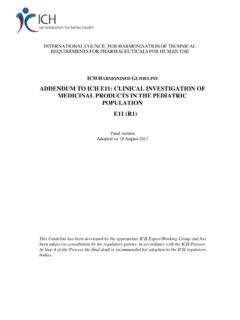
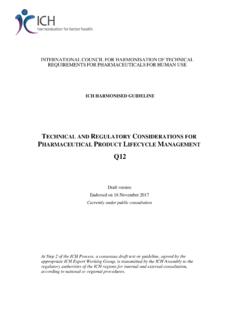
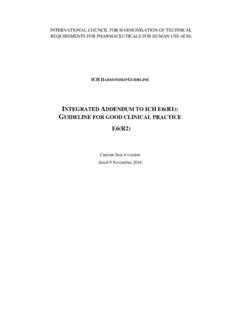
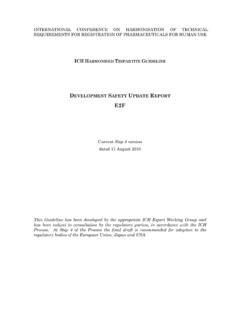
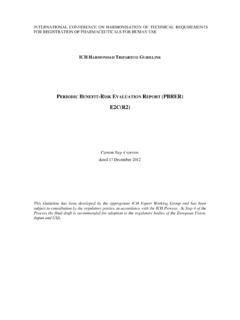
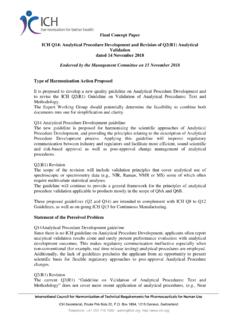
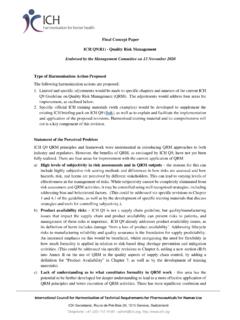
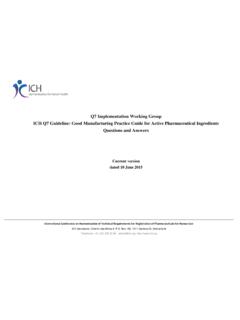
![[ICH E2F] [EXAMPLE DSUR – PHASE III INVESTIGATIONAL …](/cache/preview/e/7/a/2/e/6/3/0/thumb-e7a2e63043c4463724e748eb98faa3a7.jpg)
